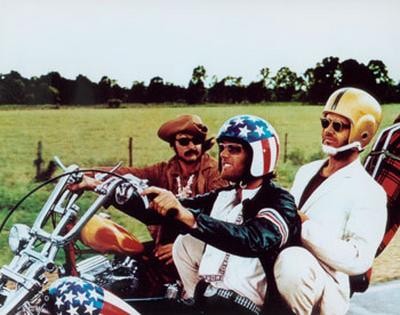Easy Riders
Post on: 16 Март, 2015 No Comment

Error.
Updated June 2, 2008 12:01 a.m. ET
THE ROUGH RIDING ON WALL STREET HAS THE FOLKS AT Royce Value Plus rubbing their hands with delight: James A. (Chip) Skinner III, who leads the fund with an assist from W. Whitney George, has been scooping up high-quality outfits that have been driven into a ditch.
Doing well when others aren’t is old hat for the duo. With a three-to-five-year investment horizon, they aim to identify and buy shares of companies with strong balance sheets, high returns on invested capital, and attractive absolute valuations. The managers’ outperformance is achieved by buying into earnings disappointments and avoiding value traps. And they interview three or four companies a day, either in their offices or at conferences.
Royce Value Plus (ticker: RYVPX) focuses on names in the micro- to mid-cap universe and beat rivals in 2002 through 2006. As of May 28, the $2.7 billion, no-load fund is down 1.45% year-to-date — but it’s running well ahead of the Standard & Poor’s 500 index, which has fallen 5%. For the three-year period, the fund is up on average 14.30% a year, versus a 7.10% gain for the broader index, and over five years, it’s up 20.74%, versus the S&P’s 9.86%.
Lipper, which classifies the fund as small-cap core — its holdings’ average market cap is around $990 million — puts the fund’s performance in the top percentile for five-year performance and in the eighth for the three-year span. The team also earns top scores from Lipper for total return and consistent return.
George (l.) and Skinner act when they see earnings misses, clean balance sheets and high returns on invested capital. Brad Trent
New York-based Royce Value Plus has about 140 positions; the largest stakes comprise roughly 2% of its holdings, and they keep a maximum of 25% exposure to any single industry. It has a fairly standard expense ratio of 1.24% for the service class and a modest 21% turnover rate, earning it a top Lipper score for tax efficiency.
Royce & Associates has been tilling the value small-cap sector for more than 35 years. The fund’s biggest competition is the other funds in the shop, George says.
George, who started the fund in 2001, is also the portfolio manager of the Royce Low-Priced Stock and International Value funds, and co-manager of Royce Micro-Cap with Jennifer Taylor, Royce Premier with founder Charles Royce, the shop’s value and capital fund, as well as the Global Select fund with David Nadel.
THE FUND IS NOW OVERWEIGHT basic materials/energy and underweight financials due to the freeze in the credit markets last summer. The credit crunch set up an opportunity in the sector, as many small stocks appear to have been insulated from the liquidity crunch by their size. Says George, They are small, so people would not lend them much. So the balance sheets are cleaner, particularly the ones we are looking at.
We use ‘cap rates’ at Royce, Skinner notes — that is, Ebit (earnings before interest and taxes, typically used to gauge earnings power from ongoing operations) divided by enterprise value.
Like George, Skinner is a bottom-up stockpicker who tends to take a contrarian view. He likes high-quality companies that are temporarily out of favor. Once he finds an interesting idea, he’ll look around the same neighborhood to see if he can find other candidates. Skinner stays diversified in order to cover his bets, and sells a stock when it becomes overvalued or its weighting in the fund reaches well above 2%.
NORMALLY, SKINNER DOESN’T spend a lot of time thinking about the big picture, but he does take a dim view of the U.S. dollar, and has ventured north to Canada for some of his positions.

It has a low-cost strategy, with highly automated plants in Honduras and the Dominican Republic, he says, adding that the company could be double its current size in five years.
We were given an opportunity to add to our position recently, with a production hiccup at its Dominican Republic plant. I expect them to fully recover and get back on the growth track by the end of the summer, he says. Gildan could generate Ebit of $149 million in 2008. His average cost has been around 25; the stock was recently at 30.11.
SKINNER AVOIDS INDUSTRIES that tend to be overleveraged. Some, such as the airline, paper, and utility industries, have more debt load than others, and therefore are unlikely to find their way into our portfolios, he explains.
Skinner, who hails from Nashville, Tenn. comes by his concentration on a clean balance sheet naturally. He began his career lending funds to small- and medium-sized companies for Dominion Bankshares. He went on to be a portfolio manager and analyst for Gartmore from 1991 to 1994. From 1994 to 2002, he worked for Merrill Lynch/Mercury Asset Management as a managing director and senior portfolio manager, running the firm’s U.S. small-cap-growth equity unit trust and mutual-fund product. Prior to joining Royce & Associates in 2003, he cofounded and managed a focused small-cap hedge fund for Accrete Capital. He has an undergraduate degree in economics from Washington & Lee University and a MBA from Vanderbilt University’s Owen Graduate School of Management.
Skinner likes asset-manager Knight Capital Group (NITE) because it’s undergoing a metamorphosis with chief executive officer Tom Joyce at the helm. It is exiting low-margin businesses and enhancing the company’s service offering by adding asset classes [now bonds, currency, international markets. not just U.S. equities] by acquiring faster-growing, high-margin boutiques, he says, adding that his average cost on the stock is 15.27. It is now around 18.
Knight has three main assets: a global-markets electronic and voice trading platform, an interest in a hedge fund, and cash. Skinner thinks it increasingly provides an attractive alternative source of liquidity compared to the large global exchanges. While results are difficult to predict with precision, given the volatility of market volumes quarter to quarter, NITE could generate on the order of $220 million in Ebit for 2008, he adds.
They should get to positive Ebit this year (estimates are for $15 million in ’08), with all eyes trained on the upcoming cost estimates for both Galore and Alaska’s Donlin Creek Mine, due out sometime in the next few months.
Skinner agrees with Chuck Royce that we are in a low-return period for equity markets: Given the run we have seen in the small-cap value segment the last seven years, my guess is that it will probably be difficult to replicate these returns during the next seven years, he says. But that’s not going to stop him from checking the ditches — for fun and profit.














